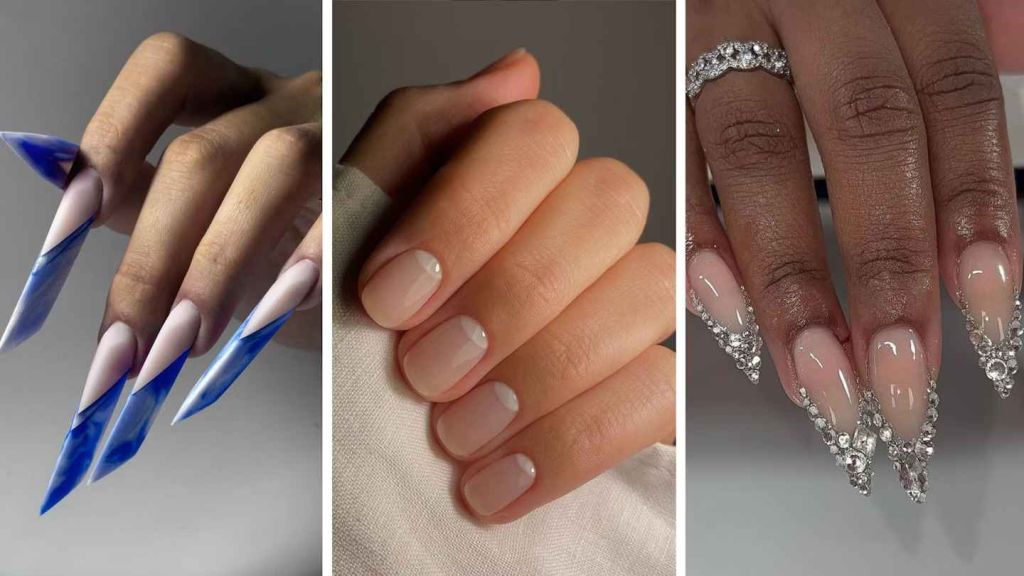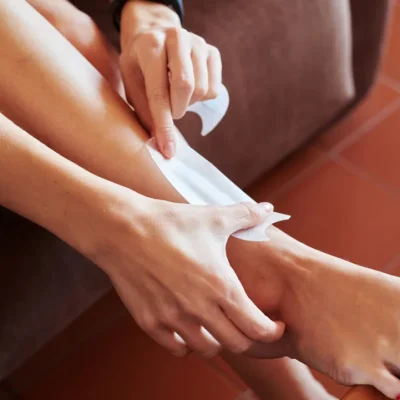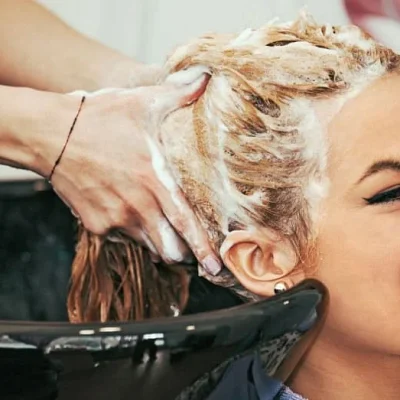When it comes to maintaining beautiful nails, the frequency of manicures can significantly affect both the health and appearance of your hands. In Lusail, a burgeoning city known for its modern lifestyle and luxurious amenities, residents often wonder how often they should indulge in manicures. In this blog post, Diva Salon helps explore various factors that influence manicure frequency, the benefits of regular manicures, seasonal considerations, and the local nail care culture.
Understanding Nail Health

To determine how often you should get a manicure, it is essential to understand the basics of nail health. Your nails are made up of keratin, a protein that can be affected by various factors such as diet, hydration, and exposure to harsh chemicals. Healthy nails appear strong and smooth, while brittle or damaged nails may require more frequent care. Regular manicures help to maintain nail health by removing dead skin, preventing hangnails, and keeping the cuticles moisturized. By monitoring your nails’ condition, you can tailor your manicure schedule accordingly.
Nail health is crucial for overall hygiene and appearance. Healthy nails are strong, smooth, and free from spots or discoloration, reflecting good overall health. Proper nail care, including regular trimming, moisturizing, and avoiding harsh chemicals, helps prevent issues like brittleness, breakage, and fungal infections. Paying attention to diet, staying hydrated, and protecting nails during activities are essential steps. For personalized care and maintaining nail health, consider professional nail services that offer tailored treatments, enhancing both nail appearance and resilience.
Lifestyle Factors
Your lifestyle plays a crucial role in how often you should get a manicure. If you have a busy schedule that involves frequent handwashing or exposure to harsh cleaning products, your nails may require more frequent attention. Additionally, individuals who work in environments that stress the hands, such as healthcare or manual labor, may find their nails become damaged more quickly and need more regular manicures. Conversely, if you lead a more sedentary lifestyle and take precautions to protect your hands, you may be able to extend the time between appointments.
Personal Preferences and Nail Styles
Personal preferences significantly influence how often one should get a manicure. Some individuals prefer to keep their nails polished and manicured at all times, opting for weekly appointments to maintain their desired look. Others may prefer a more natural appearance and only seek manicures occasionally. The choice of nail styles also matters; intricate designs or gel nails may require more frequent maintenance to prevent chipping or lifting. Ultimately, your individual style and the level of maintenance you desire will dictate your manicure schedule.
Seasonal Changes and Nail Care
Seasonal changes can impact the health and appearance of your nails. In Lusail, where the climate can be quite hot and dry, your nails may become brittle or prone to breakage. During the summer months, you might find it beneficial to schedule more frequent manicures to keep your nails hydrated and protected from the sun. In contrast, during cooler months, your nails may require less frequent care if you are less active outdoors. By adjusting your manicure frequency based on seasonal changes, you can maintain optimal nail health year-round.
The Benefits of Regular Manicures
Regular manicures offer numerous benefits beyond aesthetics. They can help to improve circulation in the hands, promote relaxation, and even reduce stress. The act of pampering oneself can enhance overall well-being, contributing to a positive mindset. Furthermore, regular manicures can help you stay attuned to your nail health, allowing you to detect any potential issues early on, such as discoloration or changes in nail texture. By prioritizing regular nail care, you invest not only in your appearance but also in your health.
Manicure Techniques and Products
The type of manicure you choose can also influence how often you should schedule appointments. Traditional manicures typically involve basic nail care, including filing, buffing, and polishing. These services may be sufficient for those who prefer low-maintenance options. However, more specialized techniques, such as gel or acrylic nails, may require more frequent visits due to their tendency to chip or grow out. Understanding the various manicure techniques and their maintenance requirements can help you plan your appointments more effectively.
Budget Considerations
Budget considerations can impact how often you can afford to get a manicure. In Lusail, the cost of nail services can vary widely depending on the salon’s location and reputation. It’s essential to balance your desire for regular manicures with your financial situation. If budget constraints are a concern, consider opting for fewer appointments while incorporating at-home nail care to maintain your nails between salon visits. This approach allows you to enjoy well-groomed nails without overspending.
When planning home services, it’s essential to consider your budget to avoid unexpected costs. Assess your needs and prioritize tasks, allocating funds accordingly. Get multiple quotes to compare prices and ensure you’re getting a fair deal. Factor in both immediate costs and potential long-term savings, such as energy-efficient upgrades that reduce utility bills. Budgeting also helps prevent overspending, allowing you to maintain financial control while enhancing your home. Careful planning ensures you receive quality services without breaking the bank.
Local Nail Care Culture in Lusail
The local nail care culture in Lusail is characterized by a blend of modern techniques and traditional practices. As a city that embraces luxury and quality, many salons offer a wide range of services, from classic manicures to elaborate nail art. The popularity of nail care in Lusail means that residents have access to some of the best products and services in the region. Engaging with the local nail care community can provide insights into the best practices and trends, allowing you to make informed decisions about your manicure frequency.
At-Home Nail Care Tips
While regular salon visits are essential, at-home nail care is equally important. Incorporating a simple routine can help extend the life of your manicures and maintain healthy nails between appointments. Start by keeping your nails clean and moisturized. Use a gentle cuticle oil to nourish your cuticles and prevent dryness. Additionally, consider using a strengthening nail polish to protect your nails from everyday wear and tear. By following these tips, you can enhance the benefits of your professional manicures and reduce the need for frequent visits.
Signs It’s Time for a Manicure
Knowing when to schedule your next manicure can sometimes be challenging. However, several signs indicate it might be time to book an appointment. If you notice chips in your polish, excessive growth of your nails, or the presence of hangnails, these are clear indicators that your nails need attention. Additionally, if your nails feel rough or appear dull, a manicure can restore their shine and health. Being proactive about your nail care will ensure that your hands always look their best.
If your nails are chipped, uneven, or brittle, it’s a clear sign it’s time for a manicure. Noticeable cuticle overgrowth or hangnails can also indicate that your hands need some care. Discoloration or dullness in your nails often points to a need for professional attention. Regular manicures keep your hands looking fresh and well-groomed, promoting nail health and preventing damage. Investing in routine cosmetology services not only boosts appearance but also maintains overall nail health and hygiene.
The Role of Nutrition in Nail Health
Your diet significantly impacts the health of your nails. Consuming a balanced diet rich in vitamins and minerals is crucial for maintaining strong and beautiful nails. Foods high in biotin, zinc, and omega-3 fatty acids can promote nail growth and strength. If you find that your nails are brittle or weak, consider consulting with a nutritionist to optimize your diet for better nail health. By combining good nutrition with regular manicures, you can achieve optimal results.
Creating a Nail Care Routine
Establishing a nail care routine is essential for maintaining nail health and beauty. This routine should include regular manicures, at-home care, and attention to diet. Depending on your lifestyle and preferences, you might choose to schedule manicures every two to three weeks or once a month. Additionally, set aside time each week for at-home care, including cleaning, moisturizing, and shaping your nails. A consistent routine will help you achieve and maintain the nail appearance you desire.
Finding the Right Nail Salon in Lusail
Choosing the right nail salon is crucial for ensuring a positive manicure experience. In Lusail, many salons offer a variety of services, so it’s essential to do your research. Look for establishments with good reviews, a clean environment, and experienced technicians. Don’t hesitate to ask about the products they use and the sanitation practices they follow. A reputable salon will prioritize your safety and satisfaction, ensuring that you enjoy your manicure experience.
Finding the right nail salon in Lusail involves considering factors such as cleanliness, service variety, and customer reviews. Look for salons with skilled technicians who use high-quality products and maintain a hygienic environment. Check if the salon adheres to safety standards, such as sterilizing tools and using disposable items where possible. The atmosphere should be welcoming, and the staff should be attentive to your needs, ensuring a relaxing experience. For a complete understanding, it’s essential to know What safety measures nail salons in Doha take, as these standards often apply to Lusail as well, ensuring a safe and satisfying visit.
FAQs
How often should a manicure be given?
To really reap the benefits of these services, professionals suggest getting a manicure and pedicure every two to three weeks to keep your nails in the best shape possible. Within this time frame, your nails and cuticles will begin to dry and grow jagged and most nail varnishes or coats will also begin to chip away.
How often should a client have a manicure?
Nail appointments should be scheduled two weeks apart, which is actually what most manufacturers recommend, and this is for good reason. However, many techs and clients can push this as much as eight weeks – three times longer than recommended.
Is it OK to get a manicure once a week?
Determining how long you should wait between manicures depends on factors such as the type of manicure, your nail growth and condition, and your nail care routine. For traditional manicures with regular nail polish, scheduling appointments every one to two weeks is recommended to maintain a polished appearance.
How often do manicures need to be redone?
Clients should come in every two to three weeks to get a fill, which accommodates the growth of their natural nails and keeps their manicure fresh. A full set should last about 4 – 6 weeks.
What should you avoid after a manicure?
Avoid long periods of time in water (for example long baths, swimming, washing up etc). Avoid picking or peeling the product off as this could damage your natural nails. Avoid filing your nails and pushing your cuticles back, as this will break the seal of the nail polish and can lead to chipping.
Conclusion
In conclusion, the frequency of manicures in Lusail depends on several factors, including lifestyle, nail health, personal preferences, and seasonal changes. While some may benefit from weekly visits, others might find that monthly appointments are sufficient. Ultimately, the key is to listen to your nails and adapt your manicure schedule accordingly. By understanding the various elements that influence nail care and engaging in a consistent routine, you can ensure that your nails remain healthy, beautiful, and well-groomed, reflecting your unique style and lifestyle in the vibrant city of Lusail.




